Original author: YBB Capital Researcher Ac-Core
Introduction
On July 5th, in the drizzling rain, the crypto market was relatively calm. As the rain cleared up, the YBB ChainXplore: Geek Symposium 01 event concluded successfully. We were honored to invite many heavyweight guests - experienced technical experts and founders dedicated to solving current industry pain points - for a face-to-face exchange.
During the event, the guests shared insights on topics such as ensuring fund security and preventing hacker attacks, where developers can obtain cloud-based API services, how to find efficient and reliable RPC services that meet their own needs, and what the scalable cross-chain interoperability protocol based on MPC, ZKP, and TEE is. Let us now feel the sparks that collided among geeks from different research directions.
Different Perspectives on the Crypto Winter
2022 is a period of prolonged bear market, and in 2023, with the end of the pandemic, we expected the market environment to improve. However, the US dollar keeps increasing interest rates, and recently, the SEC has shown a more stringent regulatory attitude towards crypto trading. What was supposed to be a year full of expectations has now become uncertain again. As industry veterans who have experienced several bull and bear cycles, how do we view the future development of the industry? And how should each of us navigate through this "winter" in our respective fields? At the beginning of the event, the host and co-founder of YBB Capital, John, invited the participating guests to share how they have been weathering the winter. Here are the core viewpoints of the guests.
Hugh, Co-founder of YBB Capital: In the previous bull market cycle from the end of 2020 to the end of 2022, we can see that market capital and technological development are positively correlated. The involvement of capital has driven the development of new narratives. For example, the entry of large funds like Grayscale in the last cycle has brought about a more upward growth space in the bull market. However, later, with the tightening of macro policies, the market was partially deprived of liquidity. The changes in each bull and bear cycle have a certain periodicity, like gears. Regarding crypto, we still need to pay more attention to technological development and breakthroughs in order to attract large funds. From the previous Black Mountain EDCON conference, it can be seen that the focus is still on...
I am interested in the breakthrough of ZK technology and the combination of AI and blockchain. Regarding AI, most people have a pessimistic attitude, believing that AI will dominate the world. However, overall, it feels very interesting, with various different ideas colliding with each other. In general, we are also looking for a new narrative to drive the development of a new bull market. Kernel Ventures Investment Manager Joshua: After Hong Kong released its compliance policy in April this year, considering the factor of liquidity, there is a greater need to comply with regulations. Liquidity is also a highly valued factor in exchange management. From the perspective of VC-level investment, although our investment frequency is not high at the moment, we are still looking for projects to collaborate with. This includes providing product recommendations and liquidity for the project, as well as connecting them with key resources. We aim to provide some value support to projects, which is something we can do for the industry at the moment. BlockPI Chief Scientist Albert He: Personally, how to survive this bear market? My advice is not to leverage. Project parties, when seeking financing, should first consider how to survive both bull and bear markets and be prepared for bear markets. It is important to improve operational capabilities in cost control and user acquisition, and try to ensure that the project can last long enough in a bear market. As for major market trends, looking back at previous bull and bear cycles, it is not difficult to see that they were driven by mainstream coins. However, the size of Bitcoin and Ethereum is already considerable. The next bull market must have several factors related to compliance, such as BlackRock's ETH application and a clear turning point in the expectation of US interest rate hikes. Only then will funds flow into the crypto market. Rooch Network Co-founder Haichao Zhu: The primary market is currently in a calm period, but we can feel that the market is prone to impatience and there is a strange phenomenon. A project may not have outstanding innovative features, but as long as it has attributes like ZK, Layer2, EVM, GameFi, and at least 100,000 users, it is easy to attract the attention of VCs. However, we will insist on building infrastructure for the industry and make contributions in ways we are good at. YBB Capital Co-founder Hugh: Currently, we can also feel that there is a polarization in the market. It is difficult for VCs to invest in good projects, even if they try hard. On the other hand, projects with weak technological barriers, despite their grounded nature, cannot attract VC investments even with low valuations. Currently, most investments are driven by market sentiment. However, at the moment, large institutions such as A16z are taking a more cautious approach.From the perspective of investment performance, most projects have been underperforming. However, we still need to look at the current market optimistically and continue to seek new technological breakthroughs with passion.Chainbase Development Relationship Supervisor Zhengxue Dai: My perspective may be a little different from others. I believe that the winter has not arrived yet. We are currently facing a global recession and a structural decrease in the domestic population. Therefore, many people have reduced their investments in the primary market because the market lacks consumer drive and the funds in the primary market are insufficient. Moreover, we can also see that the current number of developers is still increasing. Jokingly speaking, maybe the industry's winter will really be over when I myself want to leave this industry. We will pay attention to the number of developers on the entire chain and the number of contract deployments. Compared with last year, the current numbers have greatly decreased. Now most public chains want to attract a group of developers. Although Layer 2 has a very high TVL (Total Value Locked), the majority of it comes from airdrop users and has not made contributions to the ecosystem. So, I would like to ask you all, where do you think the current developers are?
BlockSec Co-Founder YaJin Zhou: Where are the developers for Web 3.0? We have also been thinking about this question because our target audience is mainly project teams. This is actually a chicken and egg problem. The projects developed by developers are ultimately for users. There must be users in order to have demand, projects, and developers. It is unrealistic to expect a large number of users to flood into Web 3.0 before there are particularly good Web 3.0 application scenarios landing. So, the question returns to how to attract more users and needs to consider which user needs Web 3.0 can solve and what kind of applications can bring users in the current bear market context. Personally, I am still optimistic about this issue. Taking advantage of the current market situation, some bad projects are being eliminated, and more funds are flowing into decentralized exchanges due to the continuous scandals in centralized exchanges. This process puts us in an accumulation and development stage, and only after this sedimentation can better products emerge.
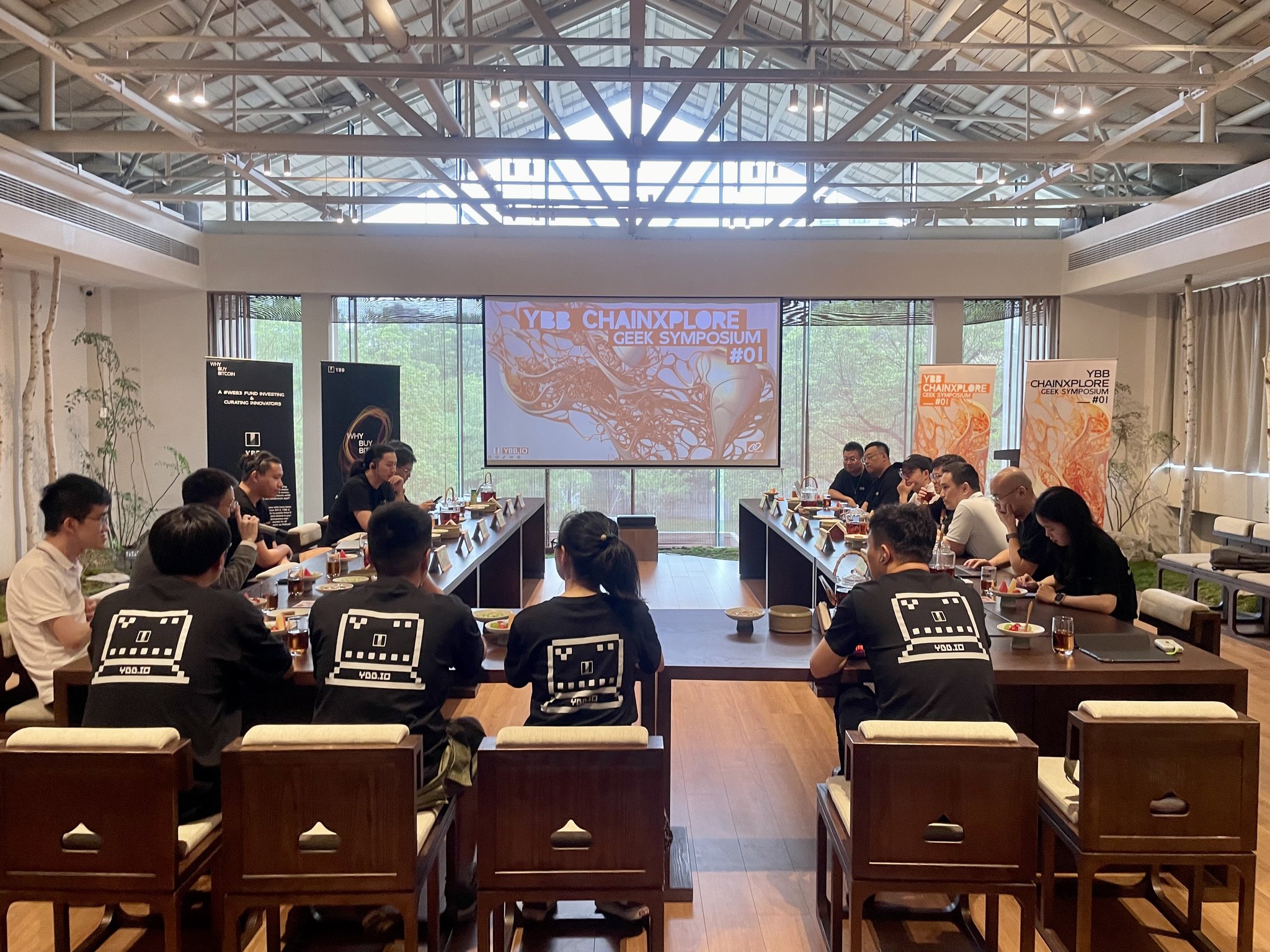
Image Source: live shooting
Dark Forest and Light Knights
According to the latest statistics from Hacked.slowmist, a blockchain security company, the total amount of losses caused by hacker attacks in the blockchain field has exceeded 30 billion US dollars, with a total of 1,108 hacker attack incidents from January 2012 to July 14, 2023.
No matter what role we play in Web 3, we can't escape the constraints of the Dark Forest Law. Compared to Web 2, the decentralized Web 3 network has lost some degree of security. Similar to Ethereum Layer 2 providing scalability, Web 3 also needs light knights to enhance network security.
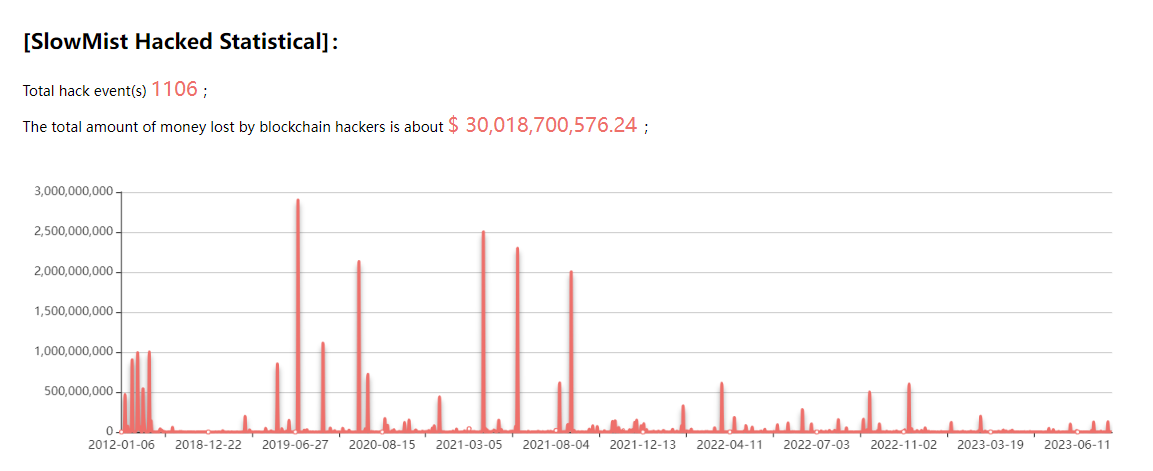
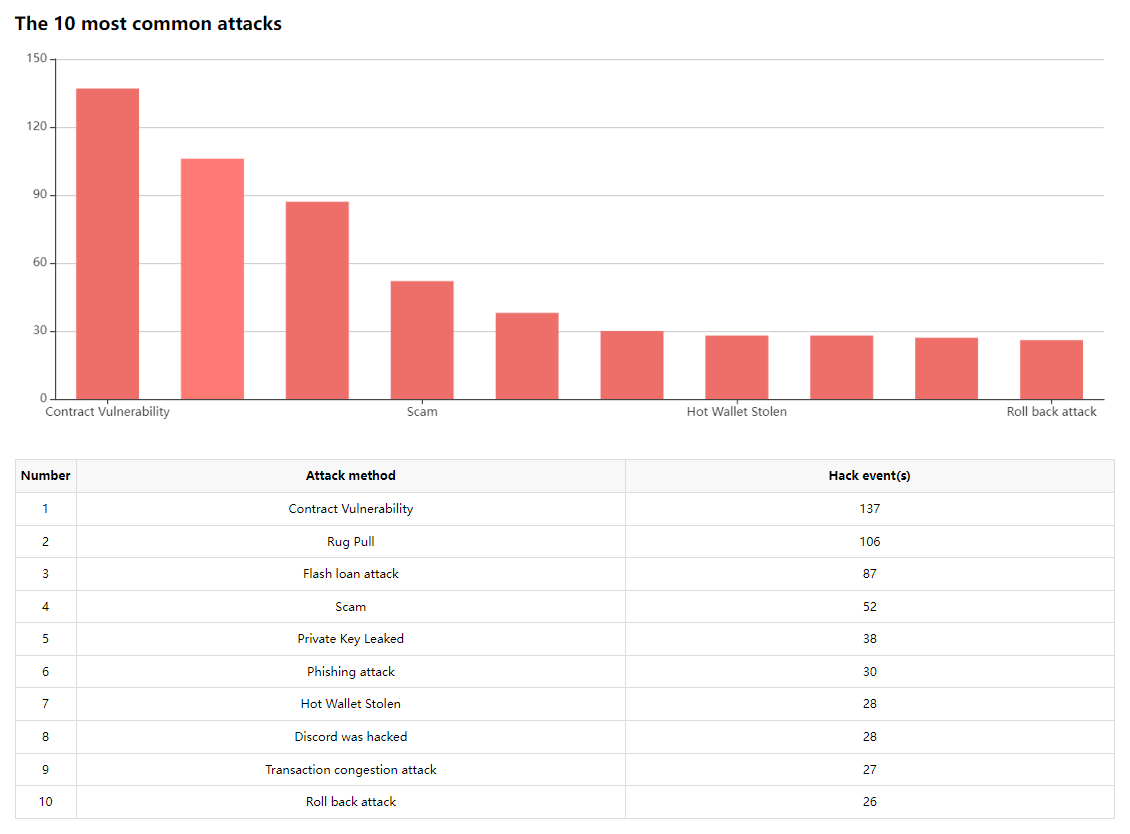
Data Source: SlowMist Official Website
Security Guardians for Users and Projects
The biggest pain point in the current industry is security. Among the many types of asset theft, user wallets, project parties, and cross-chain bridges are the three types most vulnerable to hacker attacks. In order to reduce the occurrence of such attacks, YBB Capital has invited contract security auditing project BlockSec and decentralized signature cross-chain bridge solution Bool Network to share their solutions in the field of security with the guests at the event.
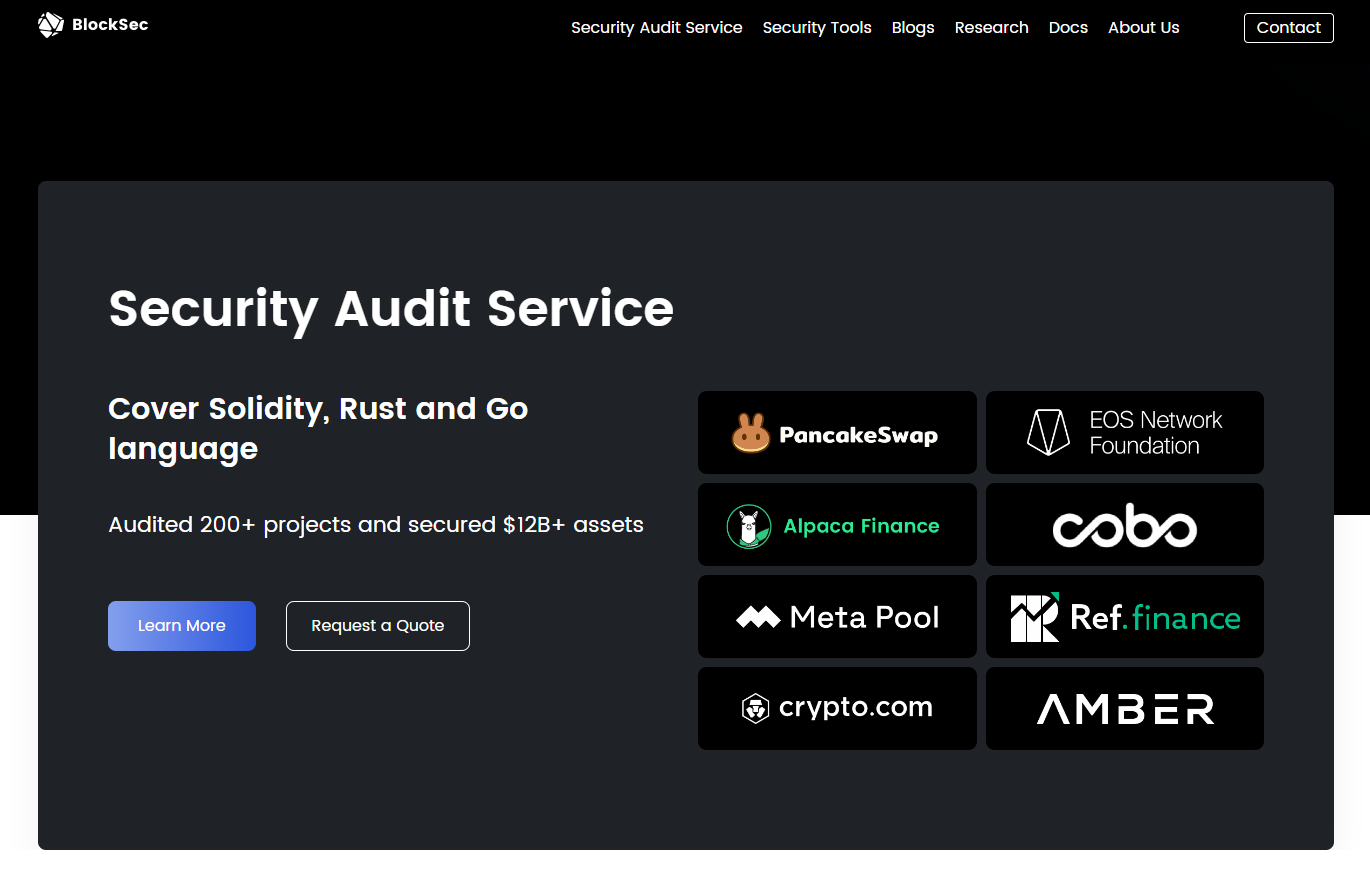
Source: BlockSec Official
BlockSec is a blockchain security service team that provides comprehensive security services throughout the project lifecycle, from contract deployment (e.g., code auditing) to post-deployment (e.g., monitoring and blocking). BlockSec's security monitoring and attack blocking technology has been widely recognized by the community and has collaborated with many mainstream projects, including the recent collaboration with Compound to develop an attack monitoring system for Compound V 3 contracts. BlockSec has been committed to providing security infrastructure for the community and has launched a series of security products and tools, including Phalcon, a blockchain development testing and monitoring suite developed for project teams, MetaDock, a security toolbox for Web 3 users, and MetaSleuth, a cross-chain fund flow tracking platform.
Enhancing security beyond code auditing
Phalcon: A development testing and monitoring suite for project teams (Phalcon.xyz)
Phalcon is a security development, testing, and monitoring suite developed by BlockSec for crypto project teams. BlockSec believes that code auditing alone cannot solve the security issues of Web 3. On the one hand, high-quality auditing services are scarce and cannot meet the needs of so many project teams. On the other hand, with the continuous evolution of attack methods, projects may face new risks after going live. Therefore, after a series of real-world drills and product exploration, Phalcon was born with the aim of bringing a new security paradigm to Web 3.
Phalcon consists of three core modules:
1) Phalcon Explorer: A powerful blockchain transaction explorer that provides transaction analysis, simulated execution, Debug, and other functions;
2) Phalcon Fork: A security testing platform that can be deployed in a private environment to replicate the status of the mainnet. It embeds a security tool suite to help project teams.
1) Security audit: Perform a preliminary security screening, while supporting team collaboration and project public testing;
2) Phalcon Block: It is an active threat defense system, providing exclusive capabilities for monitoring, alerting, and blocking (pausing or bypassing) hacker attacks. It is reported that BlockSec has successfully intercepted attacks and recovered funds exceeding $14 million, making it the only security company in the industry with successful real-world cases in the field of active defense.
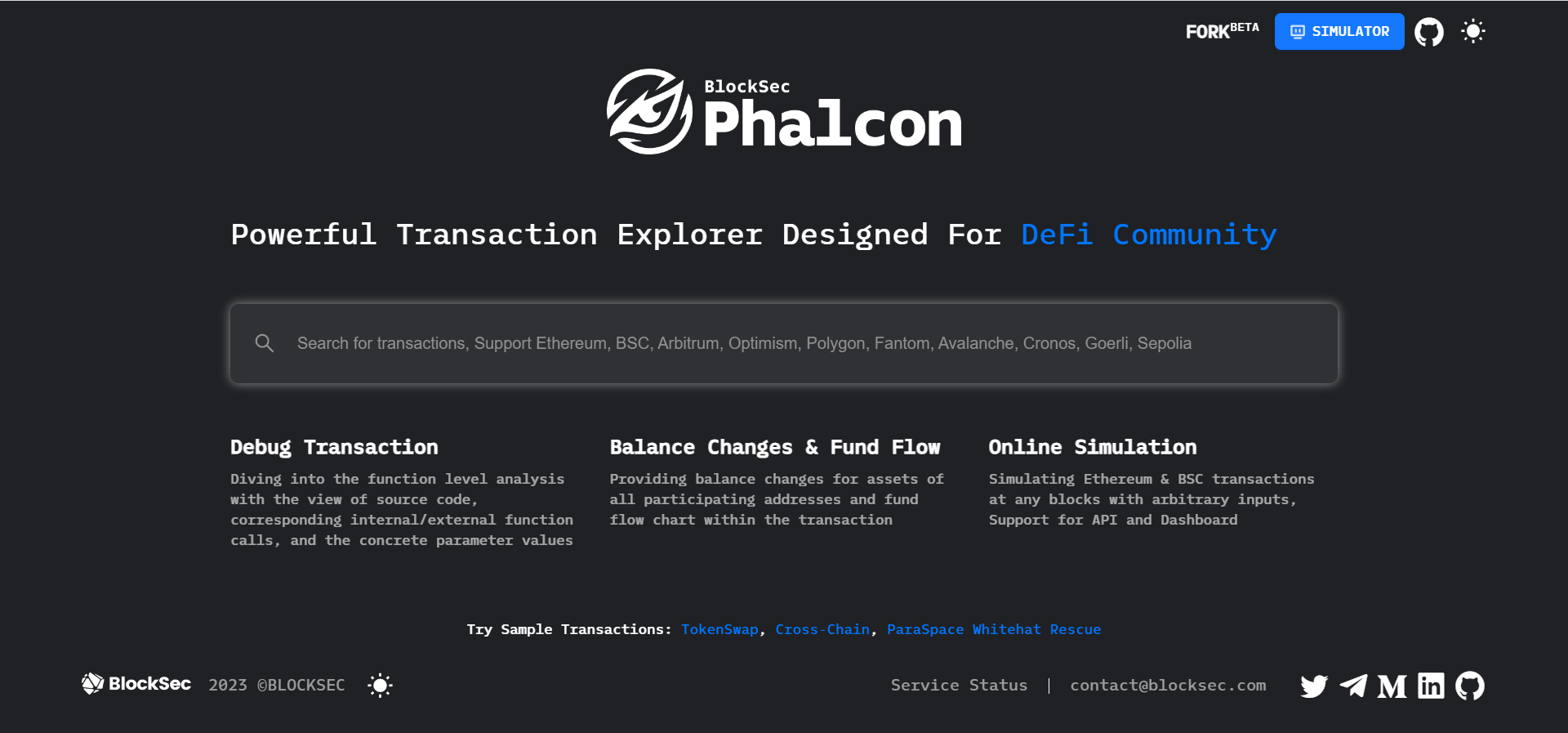
Image source: Phalcon official website
MetaDock, a security toolkit for Web 3 users (blocksec.com/metadock)
MetaDock is a completely free, open-source, non-advertising browser plugin that provides extension capabilities for blockchain browsers such as Etherscan. Through innovative product design, it seamlessly integrates more than 10 practical product functions into shortcut keys, making it an efficient tool for security researchers, data analysts, and crypto users. This product can help users quickly understand the meaning of transactions through the embedded GPT function, view the flow of funds in addresses with one click, understand the risks of NFT collections, and provide clearer labels and ratings for contract addresses. It has received five-star ratings and featured recommendations from Google Chrome and Firefox browsers.
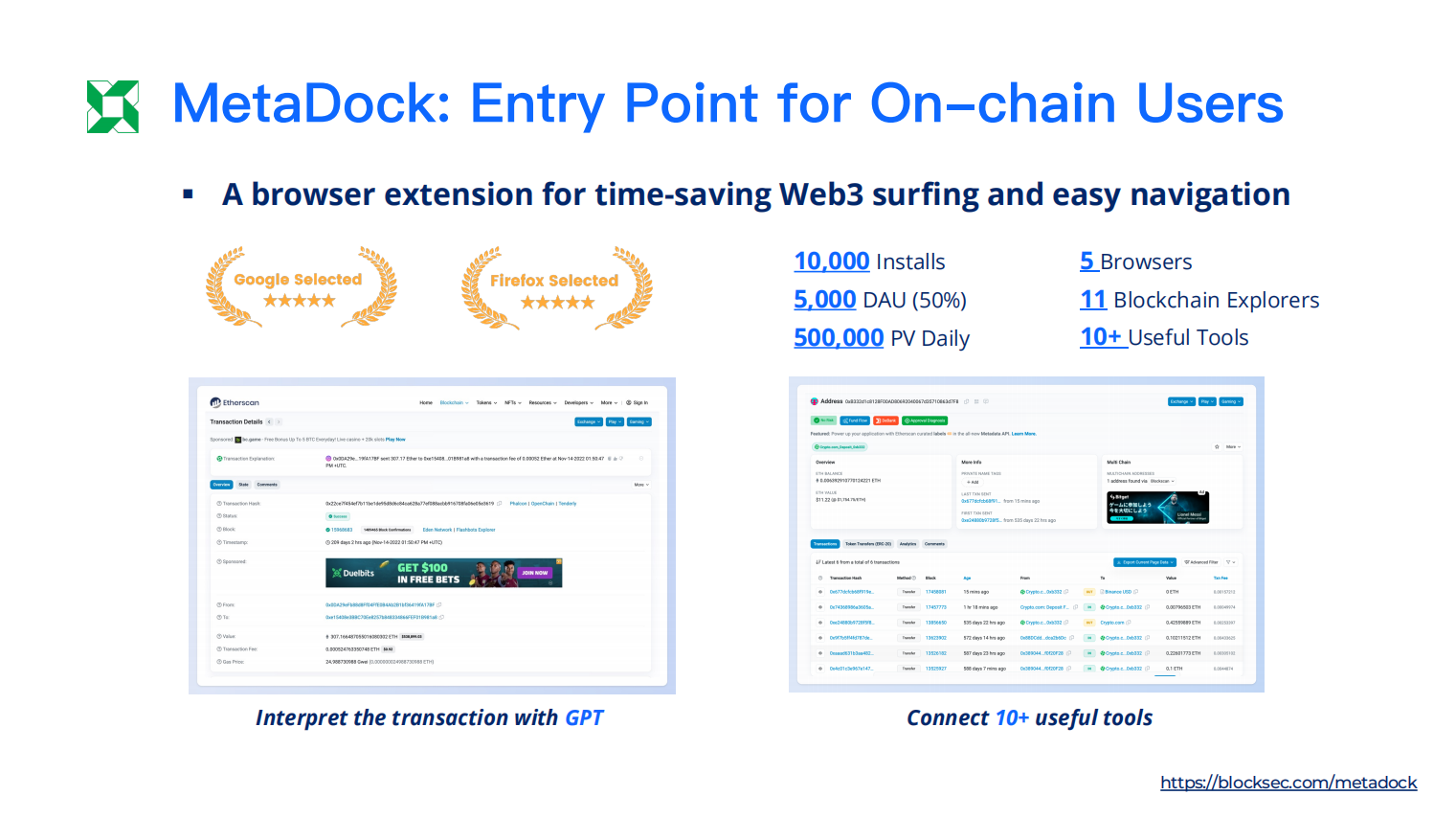
Image source: MetaDock official website
MetaSleuth, a cross-chain fund flow tracking platform (metasleuth.io)
MetaSleuth is a visualization analysis platform for cross-chain crypto assets. By entering the wallet address to be queried, users can visualize the dynamic transfer of on-chain assets related to that address. It is a frequently used tool by "chain detectives" to comprehensively monitor the flow of on-chain funds. It currently integrates ten chains.
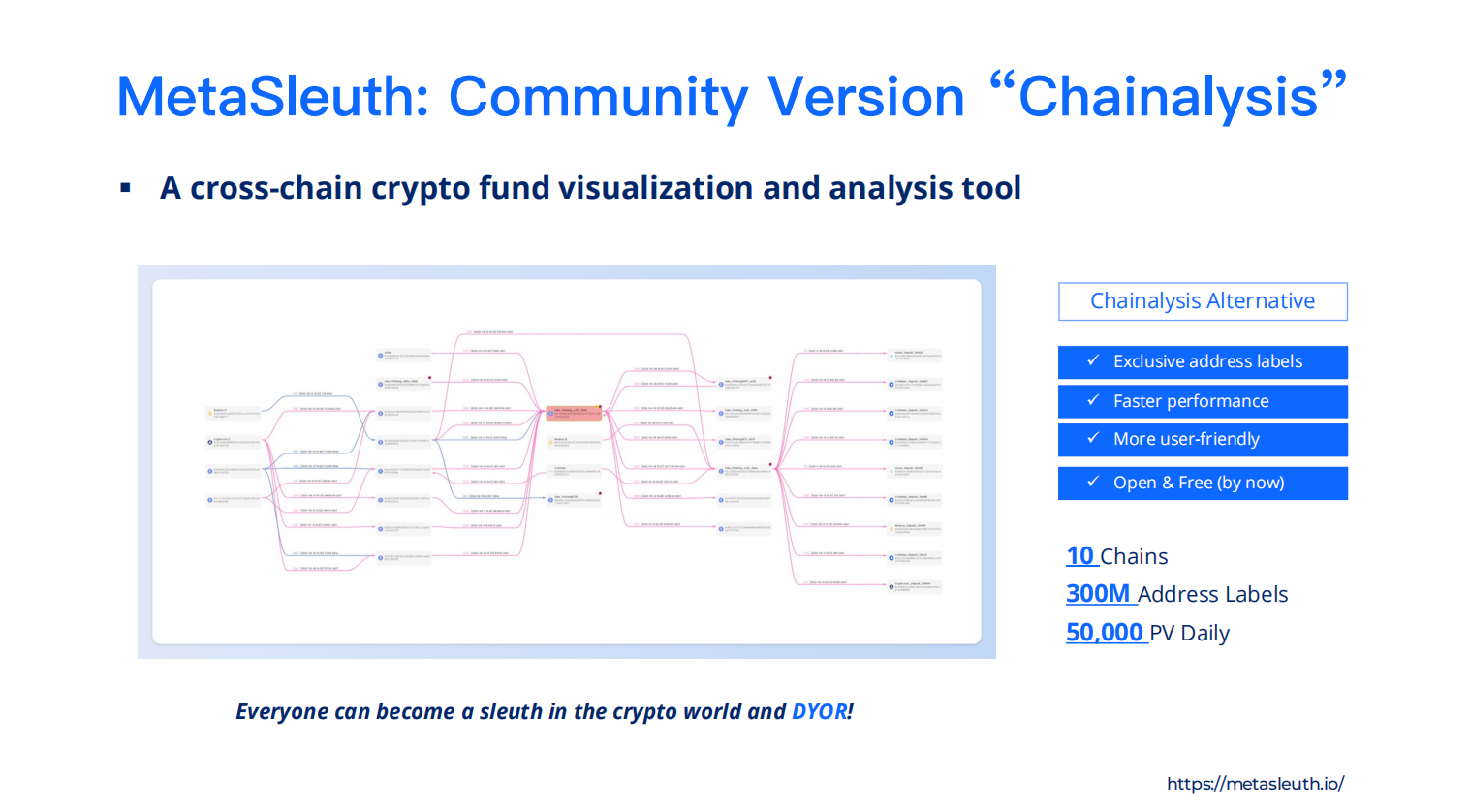
Image Source: MetaSleuth Official
Another Vulnerable Area to Hacker Attacks - Cross-chain
Bool Network is a decentralized signature network that is permissionless, completely trustless, and highly scalable, based on secure multi-party computation (MPC), zero-knowledge proofs (ZKP), and trusted execution environment (TEE). This network can serve interoperable protocols across different chains. It proposes a decentralized signature solution to facilitate the transmission of arbitrary messages and the transfer of digital assets across heterogeneous networks.
Technical Architecture
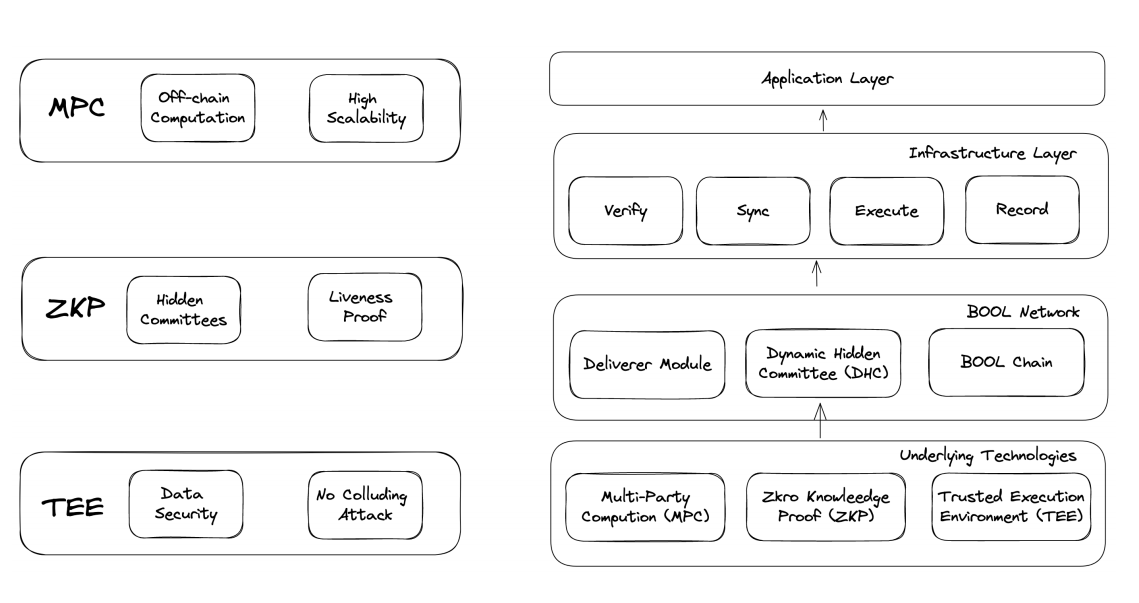
Image Source: Bool Network Official
The most core part of cross-chain is the relayer, but currently, there is no secure and decentralized relayer implementation. Therefore, most hacking incidents in the network are mainly focused on attacking cross-chain bridges. This is because most of the cross-chain relayers are controlled in a centralized manner, fundamentally stemming from incorrect management and leakage of private keys. For example, traditional solutions like multisig or MPC are controlled by partially centralized entities, which cannot fundamentally solve the security problem. However, Bool Network adopts a solution that maintains a decentralized signature network, ensuring that private key management is not controlled by any third party, thus solving such issues.
For this purpose, Bool Network introduces the concept of "Dynamic Hidden Committee," where each committee actually manages the private keys on specific blockchains to facilitate any form of cross-chain transactions and information transmission. It also proposes its original Ring Verifiable Random Function (Ring VRF) election algorithm to ensure the privacy of committee members' identities. It should be noted that all committee processes run in a TEE to ensure the confidentiality and integrity of related components.

Image Source: Bool Network Official
MPC: Allows data owners to collaboratively compute and output results in a mutually untrusted environment. Unlike multisignature, MPC (multiparty computation) offers higher privacy, stronger security, better flexibility, and wider applicability.
ZKP: It provides a unique secure verification method that hides the real public key of VRF in a ring structure based on Ring VRF, enabling the prover to demonstrate ownership of a certain public key corresponding to a private key to the verifier without revealing sensitive information through non-interactive ZKP technology.
TEE: It is a secure area in the CPU of a mobile device that guarantees computational privacy and security. In the Bool Network, TEE exists as an isolated environment that not only stores sensitive data but also provides verifiability. Verifiers can verify that the core code and business logic running in TEE have not been modified to ensure security.
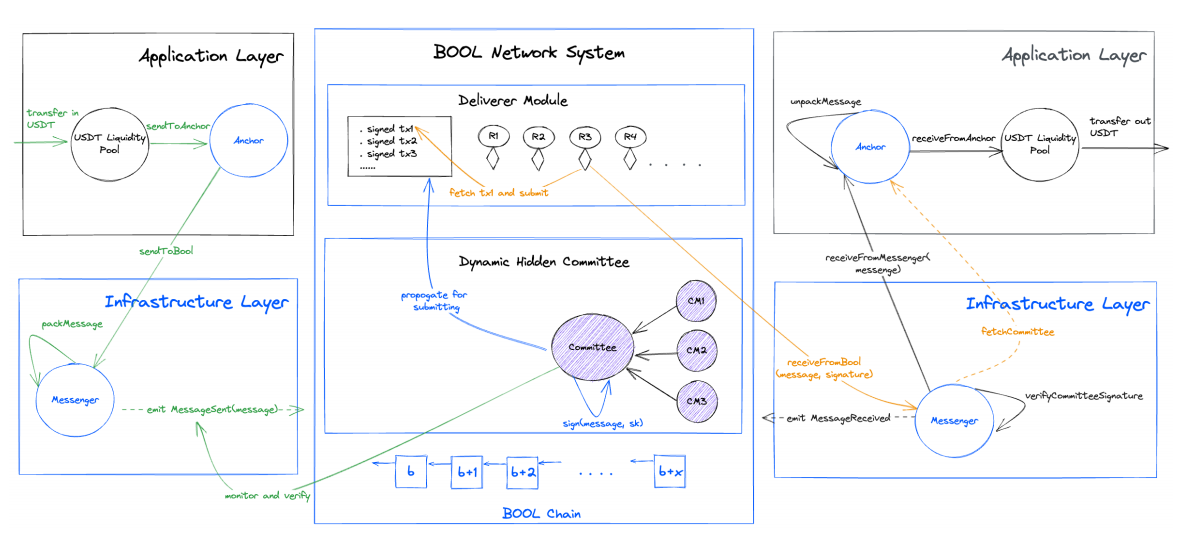
Image source: Bool Network Official
In the initialization stage of the "committee", we assume that 21 nodes are randomly selected from 10,000 TEE nodes. First, the private key controlled by the "committee" is divided into 21 fragments through the DKG algorithm, and then the private key fragments are stored in trusted hardware for encryption, so that even malicious nodes cannot obtain the real private key fragments, thus eliminating malicious intentions from the root. During this process, the Ring VRF protocol is used to hide the real identities of these committee members, preventing internal collusion and increasing the cost of external attacks. External hackers need to find the 21 hidden committee members from a total of 10,000 nodes.
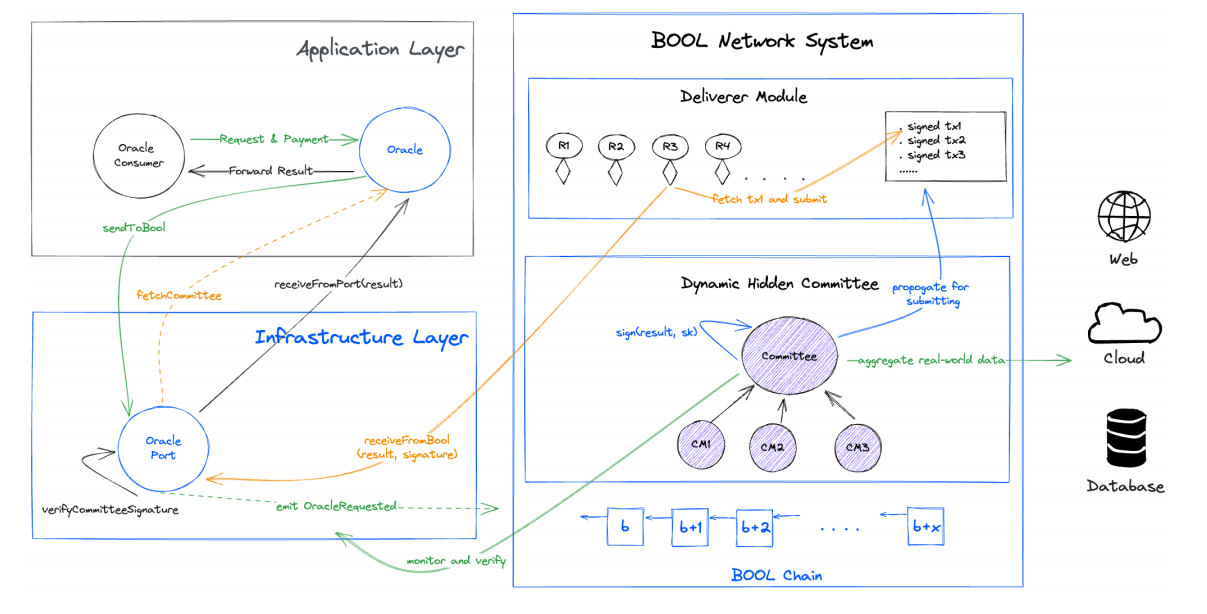
Image source: Bool Network Official
Finally, through secure multi-party computation technology, data signing requirements are achieved based on private key fragments, and secure multi-party computation has the obvious characteristic that even if some nodes are abnormally offline, the signing can still be completed. In addition, Bool also defines a fixed time period called an "epoch". For a selected group of nodes, they can only control a committee among themselves within an epoch. After an epoch, the management of a committee will be transferred to a new group of nodes. And this process is still facilitated by the Ring VRF algorithm to enhance the security of the committee management private key.
Bool Network is the secure underlying infrastructure for private key management
Bool Network is the industry's infrastructure, which is a service proposed for maintaining the security of cross-chain communication, such as managing the private keys of terminals in DeFi bridging applications built on Bool Network. In addition, Bool Network is scalable to provide consensus for off-chain committees, such as oracle services operating in a more decentralized manner.
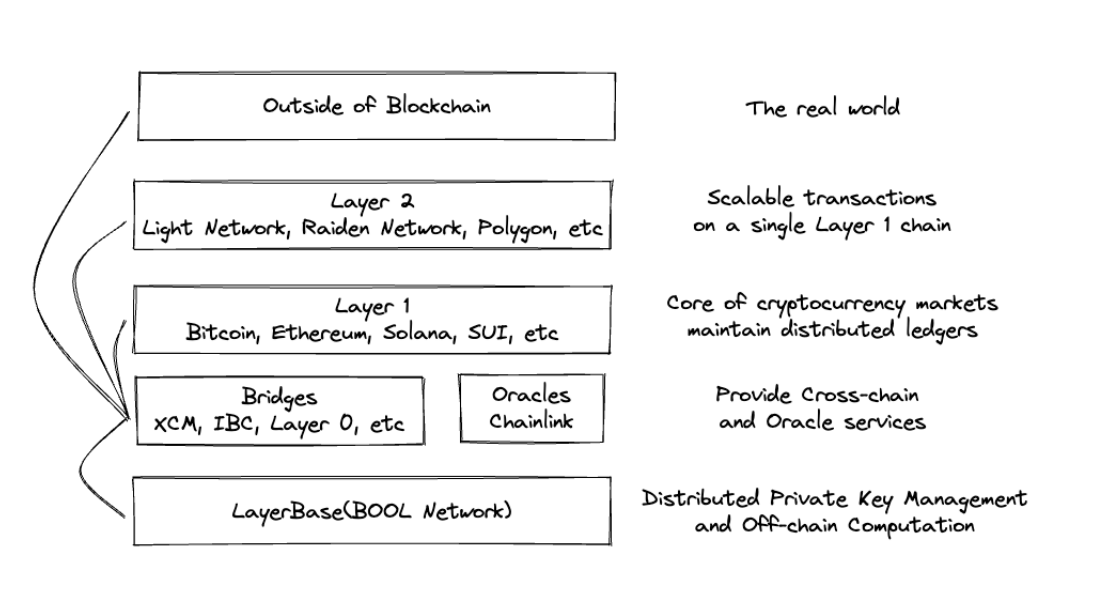
Source: Bool Network Official
In summary, what sets Bool Network apart from other cross-chain protocols is its use of Ring VRF for dynamic privacy committee management of private keys, enabling complete composability for arbitrary information transfer between heterogeneous blockchains. It's worth mentioning that Bool Network's academic research has been accepted by IEEE Transactions on Information Forensics and Security (TIFS) journal. The team plans to support more blockchain networks in the future.
The product is now compatible with networks such as Bitcoin, EVM, Solana, Sui, Filecoin, etc. The team also plans to provide secure solutions for wallets and asset management platforms. By the fourth quarter of 2023, it is expected that there will be over 1000 nodes running in Bool Network, with stronger network security and decentralization as more nodes are supported.
RPC services that accelerate developer productivity
Technically, blockchain nodes are high-performance computers or servers that are connected to a decentralized network and responsible for storing and updating blockchain data. Simply put, blockchain protocols are like Ethereum's EVM or Bitcoin's Bitcoin protocol. When you run EVM on your computer, you become a node, but there are multiple types of nodes.
RPC (Remote Procedure Calls) is a protocol for remote procedure calls. RPC services run blockchain node clients on servers and provide HTTP or WebSocket interfaces via DNS domain resolution.
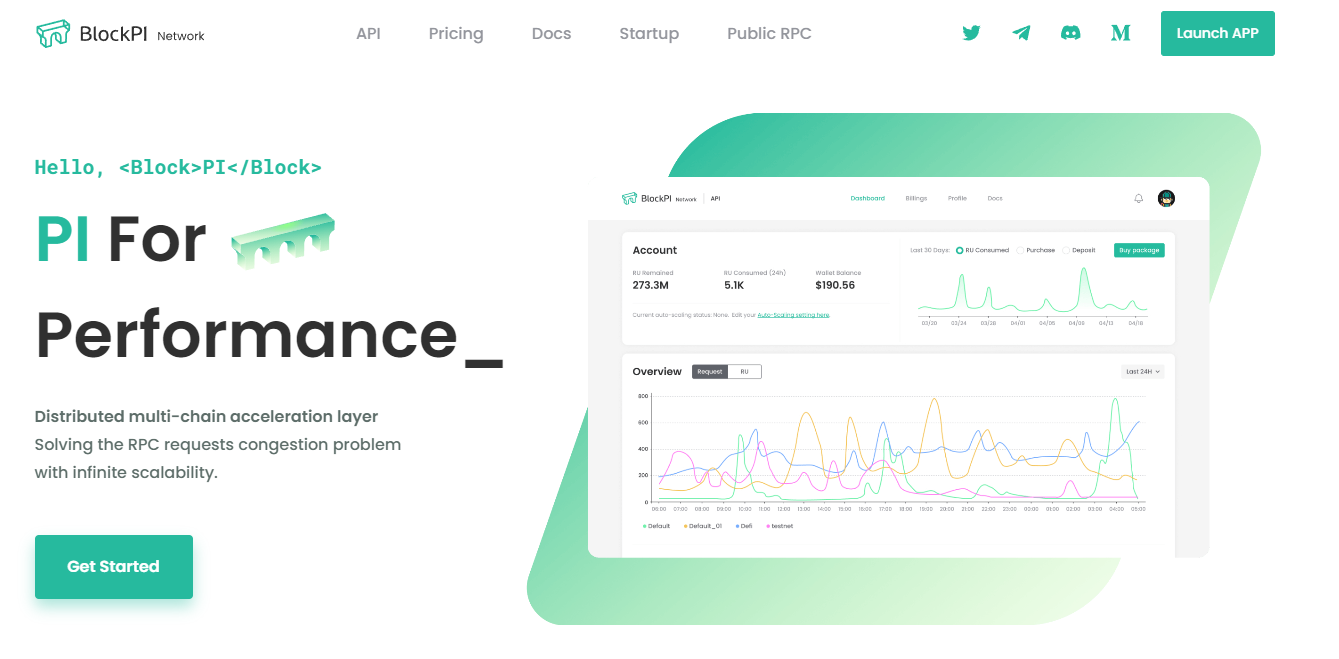
Image source: BlockPI Official Website
Technical Architecture:
BlockPI Network is a blockchain infrastructure project, consisting of five main components: BlockPI Hub, HyperNode, Gateway, FisherMan, and Validator. These five components complement each other and together form the complete network of BlockPI Network.
1) BlockPI Hub
BlockPI Hub is a collection of multiple functionalities, including user management system, node rating, certificate system, and account system. Additionally, user registration information, account information, and KYC information are all stored here. Furthermore, it continuously tests nodes in the test network, which serve as a reference data source for the BlockPI load balancer. The majority of the network's revenue, expenses, and rewards distribution to system roles are handled within the Hub, making it a significant component in the overall system.
2) Gateway
Gateway is responsible for collecting and categorizing user requests, which are then routed to the appropriate HyperNode by the BlockPI load balancer. The load balancer in Gateway continuously assesses the health status of the backend HyperNode nodes, distributing the workload to ensure optimal service state of the entire network.
3) HyperNode
HyperNode is the terminal node that handles RPC requests and sends responses to users through the Gateway. HyperNode usually runs alongside the full nodes of the target blockchain (RPC request targets). During the testnet phase, the official operation of third-party operators joining HyperNode and running nodes has validated the decentralized architecture. It now supports twenty-four blockchain networks.
4) Validator
Validator is an independent blockchain node that acts as a "police" to monitor the entire network. Through a verifiable random algorithm, Validator verifies the workload data from HyperNode and Gateway and writes the results into blocks. This data is also verified and recorded by other Validators through a consensus protocol, serving the purpose of mutual recording and verification.
5) FisherMan
FisherMan is another role responsible for network security, similar to Validator. It disguises as Gateway and User to send RPC requests to HyperNodes and Gateways, and compares the results to report any problematic comparison results.
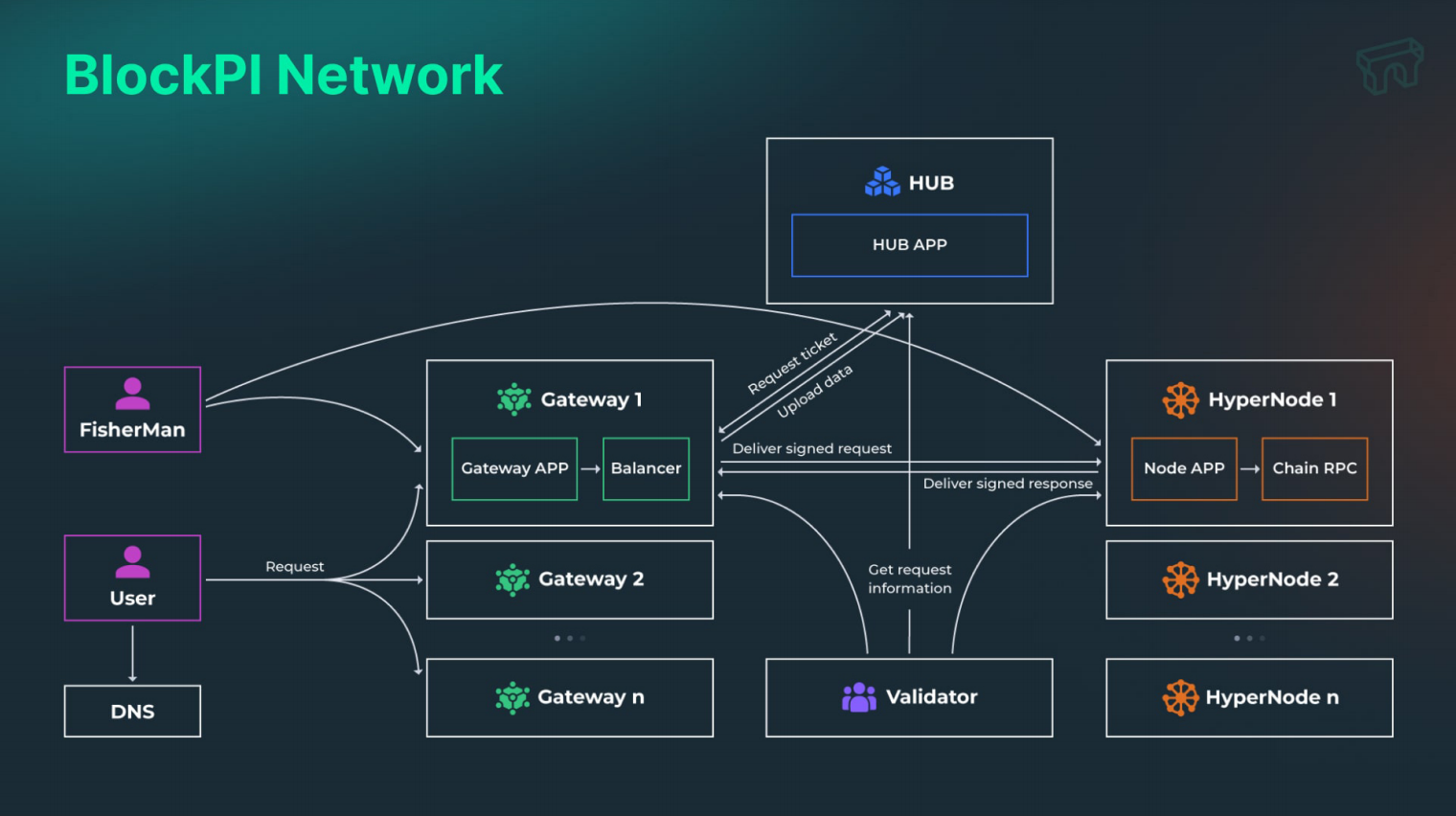
Source: BlockPI Official
Winter and Outlook
Since its inception, the blockchain industry has continuously attracted new members with its unique charm. No matter how we participate in it, we will ultimately move forward with faith. Although the industry is still in its early stages with many technological gaps, we firmly believe that if the internet changes the world again in the future, blockchain technology will lead the way.
Regardless of whether we are currently in winter or summer, the development of the industry relies on the construction and innovation of every developer. YBB Capital always adheres to the value investment logic centered around technological development and continuously provides financing assistance to excellent projects. We believe that the development of blockchain still requires continuous breakthroughs in technology to create a larger and more perfect market environment. Lastly, we are honored to work with excellent developers and builders to contribute to the blockchain industry, and to rely on technological innovation to solve market demand challenges. Whether we are developers or investors, we are pioneers at the forefront of the era. Finally, sincere thanks to all the guests present.

Source: YBB Capital



